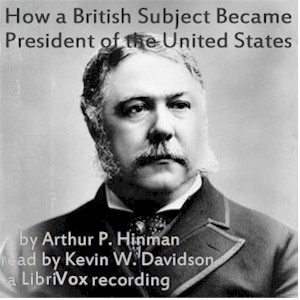RPJ’s New York: Chester A. Arthur and the “Birther” Debate
This is the latest in a series of non-legal articles on the city we work in and love.
President Chester A. Arthur is a familiar figure here at RPJ as his bronze statue stands steps from our office entrance. (A prior “RPJ’s New York” discussed Arthur’s tumultuous relationship with his political frenemy Roscoe Conkling, whose statue is also in Madison Square Park.) While his presidency may not have been the most historically significant, Arthur himself is still relevant to one of the hot-button political issues of our day: the birther debate.
As Barack Obama and Ted Cruz are well aware, accusations that a presidential candidate is ineligible for office because he or she was born outside the United States can produce potent fodder for political foes. A hundred and forty years ago, Arthur was the subject of claims that he was not a “natural born citizen,” as is required by Article II, Section 1 of the Constitution to become president. After Arthur was elected vice president in 1880 on the Republican ticket with James Garfield, Democratic operatives hired a lawyer named Arthur Hinman to find evidence that Vice President Arthur, who ascended to the presidency upon Garfield’s death in 1881, had been born in Canada rather than in Fairfield, Vermont, as he claimed (showing that birther conspiracies come from both parties).
Suspicions arose because Arthur could not produce birth records, which were not regularly kept at the time of his birth in 1829, and because his mother frequently traveled to neighboring Quebec to visit her family. Based on interviews with elderly residents in both Vermont and Quebec, and some discrepancies about the actual year of Arthur’s birth, Hinman concluded that Arthur was in fact a Canadian and had taken over the birthdate of a deceased brother to cover up the fact. Arthur refused to publicly address the controversy, and other investigations refuted the claim. Hinman, who undoubtedly would have appeared on cable talk shows had they been in existence, wrote a book on the subject: How a British Subject Became President of the United States. The controversy died, however, when an ailing President Arthur failed to receive the 1884 Republican nomination. Whether Hinman’s birther siege on Arthur had any role in the GOP’s rejection of an incumbent president, we do not know, but even over a century later, birther fervor lives on.


Written by RPJ Partner Alice K. Jump, who practices in litigation and dispute resolution, employment, real estate and infrastructure law.
